The fact that I am a Dallas native has surely made me more attentive to the assassination of President John F. Kennedy than I might have been otherwise. I was 10 years old on November 22, 1963, a fifth-grade student at Hexter Elementary School. Many times before, I had traveled through Dealey Plaza and it always struck me as a rather dramatic setting with the fountains, peristyles and pergolas (part of a WPA project completed in 1940), and Elm, Main and Commerce streets funneling down and converging 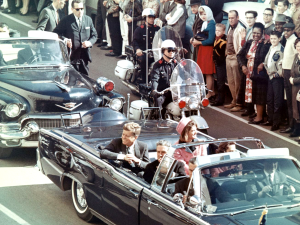 beneath the railroad overpass. Little did I know, however, that it would later come to be the scene of a historic event the controversy of which has yet to end.
beneath the railroad overpass. Little did I know, however, that it would later come to be the scene of a historic event the controversy of which has yet to end.
Oswald the innocent
I have read perhaps 15 books on the topic. If that sounds obsessive, I assure you it is not when compared with many other people whose lives exclude nearly everything else. Most of them contend that Lee Harvey Oswald either had help or was a patsy or even was completely uninvolved in the murder of America’s 35th president. These individuals, certain that Oswald could not or did not pull it off by himself, are generally labeled “conspiracy theorists.” So who was really behind it? They point to (1) pro-Castro Cubans, (2) anti-Castro Cubans, (3) Texas right-wingers, (4) some weirdos in New Orleans, (5) the American mafia, (6) the Russians, (7) Vice-President Lyndon B. Johnson and others. I have a friend by the name of Tommy Boy who is simply unbalanced when it comes to this issue. Bring it up, and you are sure to get a long diatribe on how the military-industrial complex decided that JFK had to be off’ed. He can pound out a four-page e-mail at the drop of a hat. A true believer if ever there was one, he says they did the crime, covered it up and got away with it. I quit listening to Tommy Boy a long time ago.
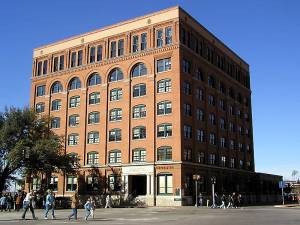 Let me step back and recall visits to Dealey Plaza on the 20th and 30th anniversaries of the assassination, in 1983 and 1993, respectively. I drove up from Austin on both occasions. In ’83, I was there as a staff member of UT’s Daily Texan. On the basis of this slim media credential, I was given access to the sixth floor of the Texas School Book Depository and the corner window from which Oswald “allegedly” shot three times in eight seconds—killing Kennedy and injuring Texas Governor John Connally. Dusty, dirty and in disarray at the time, that floor has long since been converted into a museum. Back in Dealey Plaza itself, I was in a tiny minority of people in attendance who leaned toward the view that Oswald was in fact the killer and that no conspiracy had taken place.
Let me step back and recall visits to Dealey Plaza on the 20th and 30th anniversaries of the assassination, in 1983 and 1993, respectively. I drove up from Austin on both occasions. In ’83, I was there as a staff member of UT’s Daily Texan. On the basis of this slim media credential, I was given access to the sixth floor of the Texas School Book Depository and the corner window from which Oswald “allegedly” shot three times in eight seconds—killing Kennedy and injuring Texas Governor John Connally. Dusty, dirty and in disarray at the time, that floor has long since been converted into a museum. Back in Dealey Plaza itself, I was in a tiny minority of people in attendance who leaned toward the view that Oswald was in fact the killer and that no conspiracy had taken place.
His other murder on November 22
(I have also visited his rooming house at 1026 North Beckley, the intersection of 10th and Patton streets in Oak Cliff where he killed police officer J.D. Tippit, the Texas Theater on Jefferson Avenue where he was apprehended and the basement of the Dallas Police Headquarters where Jack Ruby plugged him with a pistol two days after the assassination. I have not been to his gravesite at Rose Hill Cemetery in Fort Worth, but maybe some day.)
I think a fairly substantial mountain of evidence points to Oswald. He just happened to get a low-paying job in the School Book Depository five weeks before Kennedy would be coming to town and passing by. He was a nobody desperate to be a somebody, and what better way than to kill the president? In April of that year, Oswald had a dry run of sorts when he attempted to kill retired General Edwin Walker at his 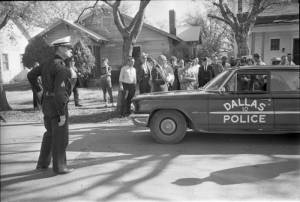 Dallas home. In both instances, he used the mail-order Mannlicher-Carcano rifle he had bought in 1962. He missed when he shot at an immobile Walker, but he hit Kennedy and Connally who were in a moving car; I admit that these two facts are hard to reconcile. Was Oswald, a former Marine, an expert marksman or not? Opinions vary on that.
Dallas home. In both instances, he used the mail-order Mannlicher-Carcano rifle he had bought in 1962. He missed when he shot at an immobile Walker, but he hit Kennedy and Connally who were in a moving car; I admit that these two facts are hard to reconcile. Was Oswald, a former Marine, an expert marksman or not? Opinions vary on that.
Nicknamed “Ozzie Rabbit” by some of his military buddies, he was a curious man and one for whom I actually have some sympathy. His father died before he was born, and his mother was neurotic if not mentally ill. Oswald got a sub-par education in New Orleans, New York and Fort Worth, and even then some authorities thought he had a disturbed personality. He declared himself a Marxist and shocked everyone by emigrating to the Soviet Union in 1959. The Russkies assumed he was an American spy but soon came to see he was just a lonely loser. When he got disillusioned with life in the USSR, he was allowed to leave with his new wife Marina and their baby girl. It is possible if not probable that Marina was a KGB sleeper agent.
Oswald came home and began working at a series of crummy jobs in Dallas and New Orleans, living alone at times because Marina found his odd ways intolerable. He was sometimes on unemployment. Oswald carried on a number of political activities that later just fed the conspiracy theorists. In September 1963, he made a mysterious trip to Mexico City, visiting the Soviet and Cuban consulates. (At the former consulate, he dealt with V.V. Kostikov, a KGB man whose specialty was international terrorism, sabotage and assassinations.) Oswald used numerous aliases, wrote cryptic letters and was a habitual liar. This guy wanted and needed to be taken seriously, but few were willing to do so.
Since Kennedy was somewhat liberal, there would seem to be no clear political reason for Oswald to kill him. Nevertheless, I think he wanted to impress some people in the Soviet and Cuban embassies, and leapt at the opportunity after hearing that the presidential motorcade would pass by on November 22. This is why he made a special trip out to Irving the night before to pick up a box of “curtain rods” in the garage of the home where his estranged wife was staying. In fact, his disassembled rifle was in the box and he used it at 12:30 p.m. that fateful day. He was not coerced into shooting Kennedy and Connally, nor did he have confederates. There were no gunmen on the grassy knoll, on the railroad overpass or anywhere else in Dealey Plaza.
Jesse Curry screws up in a big way
Oh, others are worthy of blame. We could start with the Secret Service, which did a poor job of protecting Kennedy. (The president inadvertently contributed to his own death by insisting that the protective bubble be left off the Lincoln Continental in the motorcade.) The FBI certainly should have 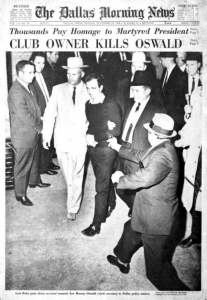 kept closer watch on the erratic Oswald. And then there is the Dallas Police Department and the Dallas County Sheriff’s Department, both of which investigated the crime. How in the world is it possible that the questioning done of Oswald between the time of his arrest and his murder at the hands of Ruby—roughly 45 hours—was not recorded? I know tape recorders existed in 1963. A few deputies took notes and then tore them up, but at whose behest? This is strange, by almost any measure. Oswald, lacking an attorney, was paraded before the media numerous times in ways that utterly disregarded his civil rights.
kept closer watch on the erratic Oswald. And then there is the Dallas Police Department and the Dallas County Sheriff’s Department, both of which investigated the crime. How in the world is it possible that the questioning done of Oswald between the time of his arrest and his murder at the hands of Ruby—roughly 45 hours—was not recorded? I know tape recorders existed in 1963. A few deputies took notes and then tore them up, but at whose behest? This is strange, by almost any measure. Oswald, lacking an attorney, was paraded before the media numerous times in ways that utterly disregarded his civil rights.
We might have come to know the truth if not for the biggest mistake of all, Police Chief Jesse Curry announcing that Oswald’s transfer into custody of the Sheriff’s Department would occur Sunday morning in the basement of the Police Headquarters. The FBI strongly warned him to do this in a quiet and secure way. It does not require a degree in criminal justice know that the security of a suspected presidential assassin should be paramount. The situation in that basement was anything but secure, as Ruby demonstrated.
Naturally, many people—Tommy Boy, for example—are quite certain that Ruby was in on the deal and was directed to shut Oswald’s mouth permanently. Although Ruby had organized crime ties, I see little evidence to support such an idea.
Oswald never went to trial, so President Johnson felt the need to set the record straight and created the Warren Commission, which consisted primarily of politicians. Not a single man in the group had the slightest experience in criminal investigation. They were supposed to present their report in advance of the 1964 presidential election, which Johnson won handily. The composition and methods of the Warren Commission were subject to legitimate criticism, but its main conclusion was sound: Lee Harvey Oswald alone had killed the president.
Chaos at Parkland
I want to say one more thing in conclusion, and it pertains to what the doctors did to Kennedy after he was rushed to Parkland Hospital. They furiously tried to save his life although a large portion of his head had been blown off. A tracheotomy was performed, but it was clearly too late. Some of this may have 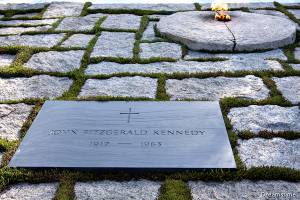 created problems regarding entrance wounds and exit wounds when an autopsy was performed that night outside of Washington, D.C.
created problems regarding entrance wounds and exit wounds when an autopsy was performed that night outside of Washington, D.C.
The Kennedy people—his widow Jackie, his brother Robert (U.S. attorney general) and others—were traumatized and wanted to get his body out of Dallas as fast as possible. Air Force One left Love Field barely an hour after Oswald had been apprehended and brought back downtown. FBI Director J. Edgar Hoover was making public and private assurances that Oswald alone had committed the blunderous deed. Although this was vastly premature, I believe it was correct.

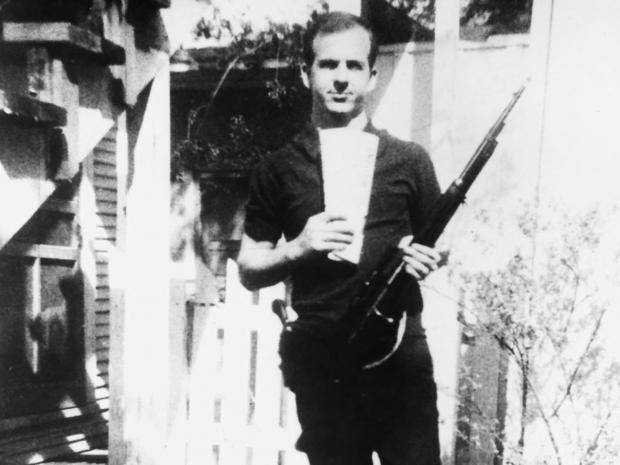
Add Comment